Input interpretation

toluene
Chemical names and formulas
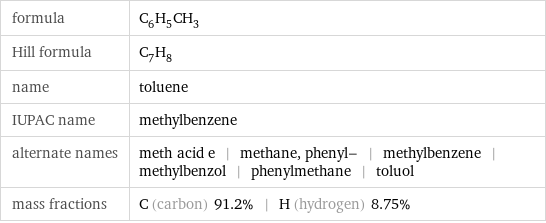
formula | C_6H_5CH_3 Hill formula | C_7H_8 name | toluene IUPAC name | methylbenzene alternate names | meth acid e | methane, phenyl- | methylbenzene | methylbenzol | phenylmethane | toluol mass fractions | C (carbon) 91.2% | H (hydrogen) 8.75%
Lewis structure
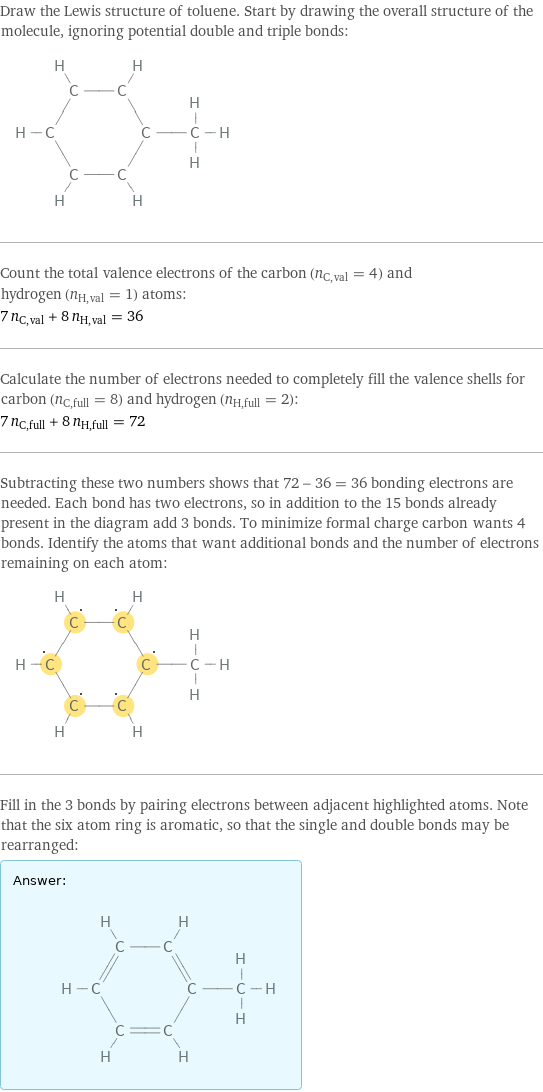
Draw the Lewis structure of toluene. Start by drawing the overall structure of the molecule, ignoring potential double and triple bonds: Count the total valence electrons of the carbon (n_C, val = 4) and hydrogen (n_H, val = 1) atoms: 7 n_C, val + 8 n_H, val = 36 Calculate the number of electrons needed to completely fill the valence shells for carbon (n_C, full = 8) and hydrogen (n_H, full = 2): 7 n_C, full + 8 n_H, full = 72 Subtracting these two numbers shows that 72 - 36 = 36 bonding electrons are needed. Each bond has two electrons, so in addition to the 15 bonds already present in the diagram add 3 bonds. To minimize formal charge carbon wants 4 bonds. Identify the atoms that want additional bonds and the number of electrons remaining on each atom: Fill in the 3 bonds by pairing electrons between adjacent highlighted atoms. Note that the six atom ring is aromatic, so that the single and double bonds may be rearranged: Answer: | |
3D structure
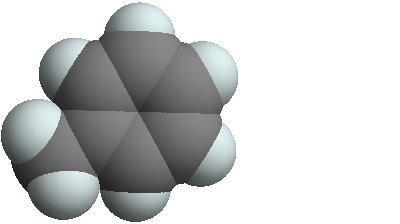
3D structure
Basic properties
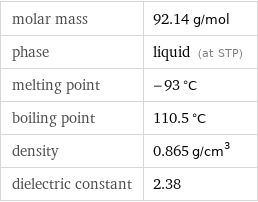
molar mass | 92.14 g/mol phase | liquid (at STP) melting point | -93 °C boiling point | 110.5 °C density | 0.865 g/cm^3 dielectric constant | 2.38
Liquid properties (at STP)
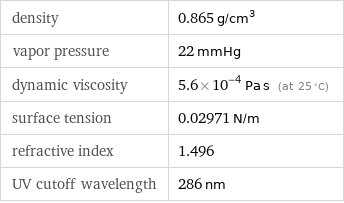
density | 0.865 g/cm^3 vapor pressure | 22 mmHg dynamic viscosity | 5.6×10^-4 Pa s (at 25 °C) surface tension | 0.02971 N/m refractive index | 1.496 UV cutoff wavelength | 286 nm
Units

Thermodynamic properties
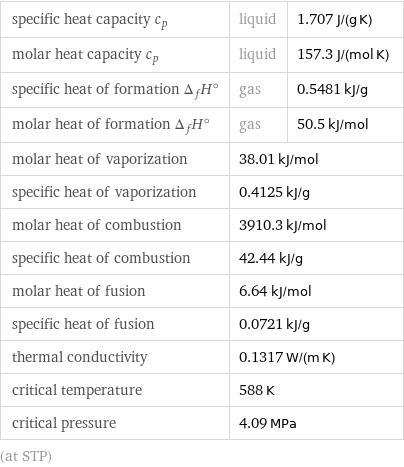
specific heat capacity c_p | liquid | 1.707 J/(g K) molar heat capacity c_p | liquid | 157.3 J/(mol K) specific heat of formation Δ_fH° | gas | 0.5481 kJ/g molar heat of formation Δ_fH° | gas | 50.5 kJ/mol molar heat of vaporization | 38.01 kJ/mol | specific heat of vaporization | 0.4125 kJ/g | molar heat of combustion | 3910.3 kJ/mol | specific heat of combustion | 42.44 kJ/g | molar heat of fusion | 6.64 kJ/mol | specific heat of fusion | 0.0721 kJ/g | thermal conductivity | 0.1317 W/(m K) | critical temperature | 588 K | critical pressure | 4.09 MPa | (at STP)
Phase diagram
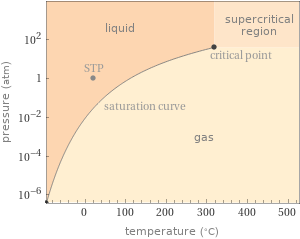
Phase diagram
Units

Basic drug properties

approval status | experimental | small molecule drug categories | solvent
Hydrophobicity and permeability properties
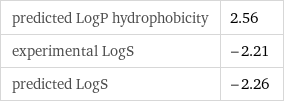
predicted LogP hydrophobicity | 2.56 experimental LogS | -2.21 predicted LogS | -2.26
Chemical identifiers
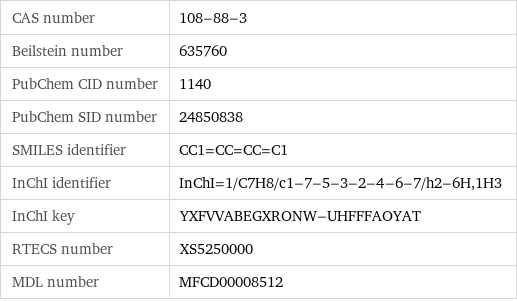
CAS number | 108-88-3 Beilstein number | 635760 PubChem CID number | 1140 PubChem SID number | 24850838 SMILES identifier | CC1=CC=CC=C1 InChI identifier | InChI=1/C7H8/c1-7-5-3-2-4-6-7/h2-6H, 1H3 InChI key | YXFVVABEGXRONW-UHFFFAOYAT RTECS number | XS5250000 MDL number | MFCD00008512
NFPA label

NFPA label
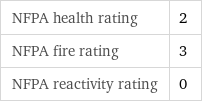
NFPA health rating | 2 NFPA fire rating | 3 NFPA reactivity rating | 0